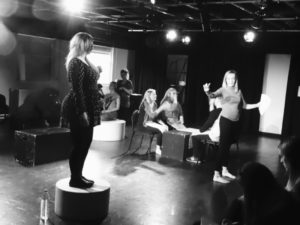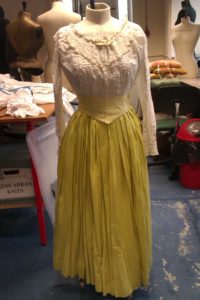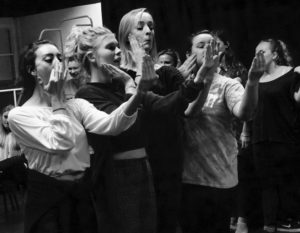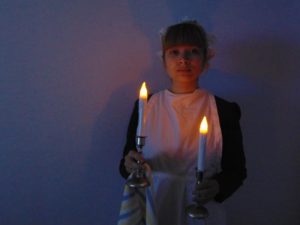Last month was a big one for our work with the 3rd year Theatre and Performance students; on 10, 11 and 12 December they performed their new musical, Electrified at the University, and on the 16th we visited Lotherton Hall to shoot material for our digital interactive and our short film.
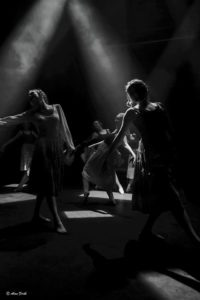
The musical, based in December 1882, addresses the aftermath of the death of William Dimmock, a labourer at Hatfield House, the grand ancestral home of the Gascoyne-Cecil family near London. Dimmock died of an electric shock when he accidentally came into contact with electrical wires in the Hatfield garden a year before the events of the play, and the characters, both the family and servants, have differing views about the desirability of having electrical lighting in the house.
Robert Arthur Gascoyne-Cecil, 3rd Marquess of Salisbury and three times Prime Minister, was a pioneer of domestic electrical technologies, installing a system of electrical call bells as early as 1869, shortly after the death of the 2nd Marquess. He later experimented with arc lighting, powerful lights usually employed outdoors, but which he for a time had installed in the dining room at Hatfield – much to the distress of his female relations and guests.
In the musical, Lord Salisbury still feels guilty for Dimmock‘s death, and Dimmock‘s two sisters Ruth and Mary have begun working at Hatfield House and at the Savoy Theatre respectively. Mary is a dancer in the new Gilbert and Sullivan operetta, Iolanthe. The theatre had been electrified shortly before – the first to be so lit – and Iolanthe was the first production to be staged with the new electric lights. However, as the musical illustrates, not everyone was comfortable or convinced about the safety of this arrangement – least of all William Dimmock‘s mother.
The songs and music are a mixture of period songs, contemporary lyrics set to new music, and brand new pieces; highlights include a tea party sing-along about the excited possibilities of electric lighting, and the dancers of Iolanthe lamenting their pale and pallid appearances under the glare of the new lights in the theatre. The three performances were very well attended, and the students were excellent. The musical was filmed, and can be viewed online in its entirety here:
[youtube https://www.youtube.com/watch?v=Uc2_Rwwz-nU]
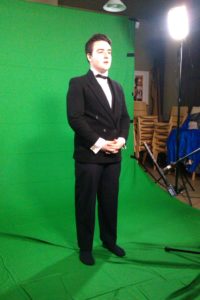
We followed up this success with an intensive day of filming at Lotherton Hall, working with Leeds Media Services to capture content for our online interactive, such as shots of some of the rooms and green screen footage of the guide characters. This was a new challenge for the students, but one which they handled very well, and was a great experience for them – and for me! Getting everything right took a lot of patience, a fair few retakes, and of course the calm, efficient expertise of Steve and Mark at Leeds Media Services.
Finally we shot the short film, Lotherton Electrified, which we managed to wrap up in just two and half hours. The experience has taught me a lot about interpreting academic research imaginatively for portrayal on film. The most important lessons for me have been allowing plenty of time for reshoots, resting and costuming considerations, and the need for flexibility on location with matters of framing shots and scripting – if something isn‘t working out, it‘s better to change it quickly and move on.
Lotherton Electrified will be used in the house as required, either on a tablet or in the cinema room, as well as providing a great advert for the project as a whole, and demonstrating the general themes of Professor Gooday’s book Domesticating Electricity in an engaging and accessible way. It will also be available online in February.
